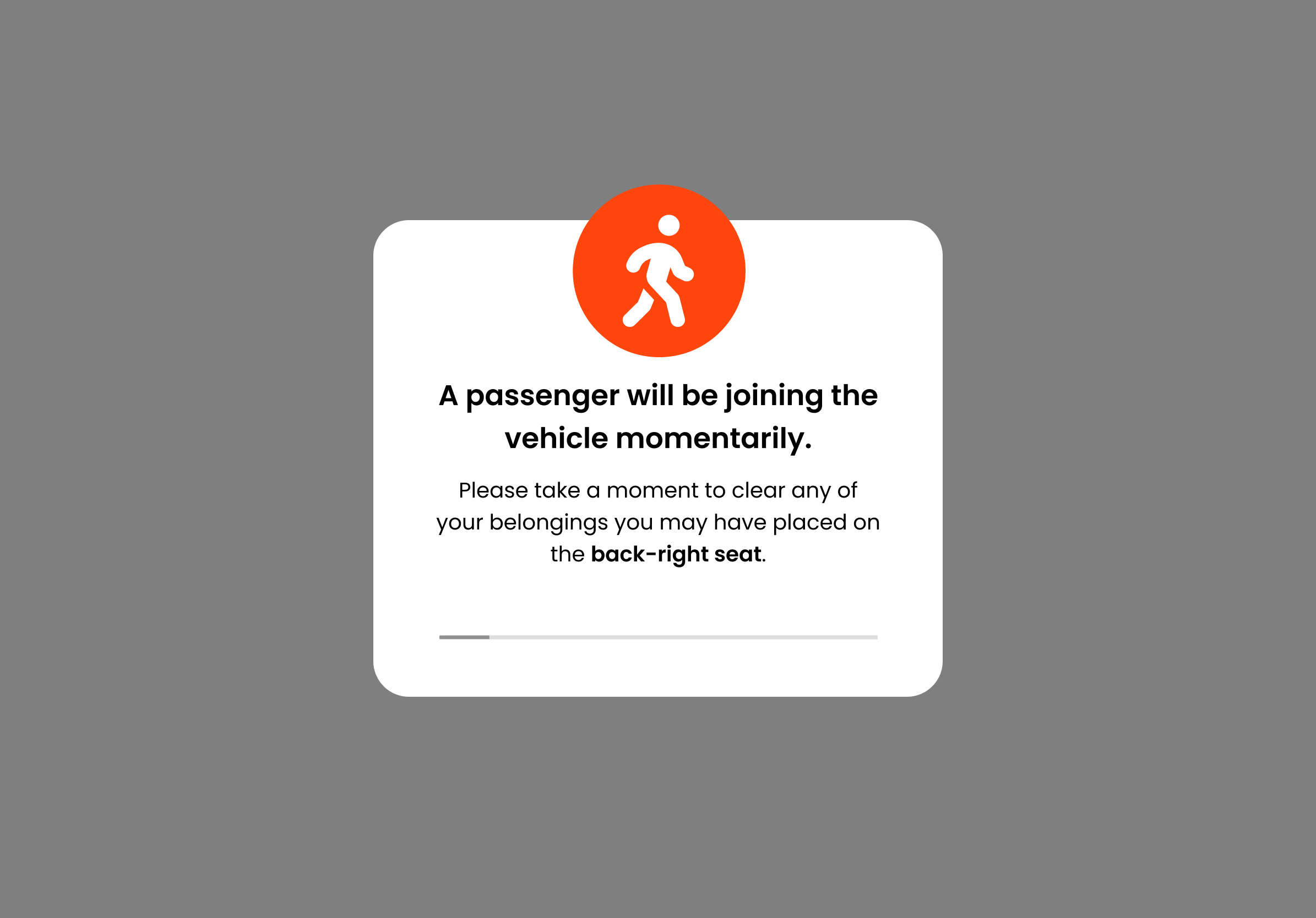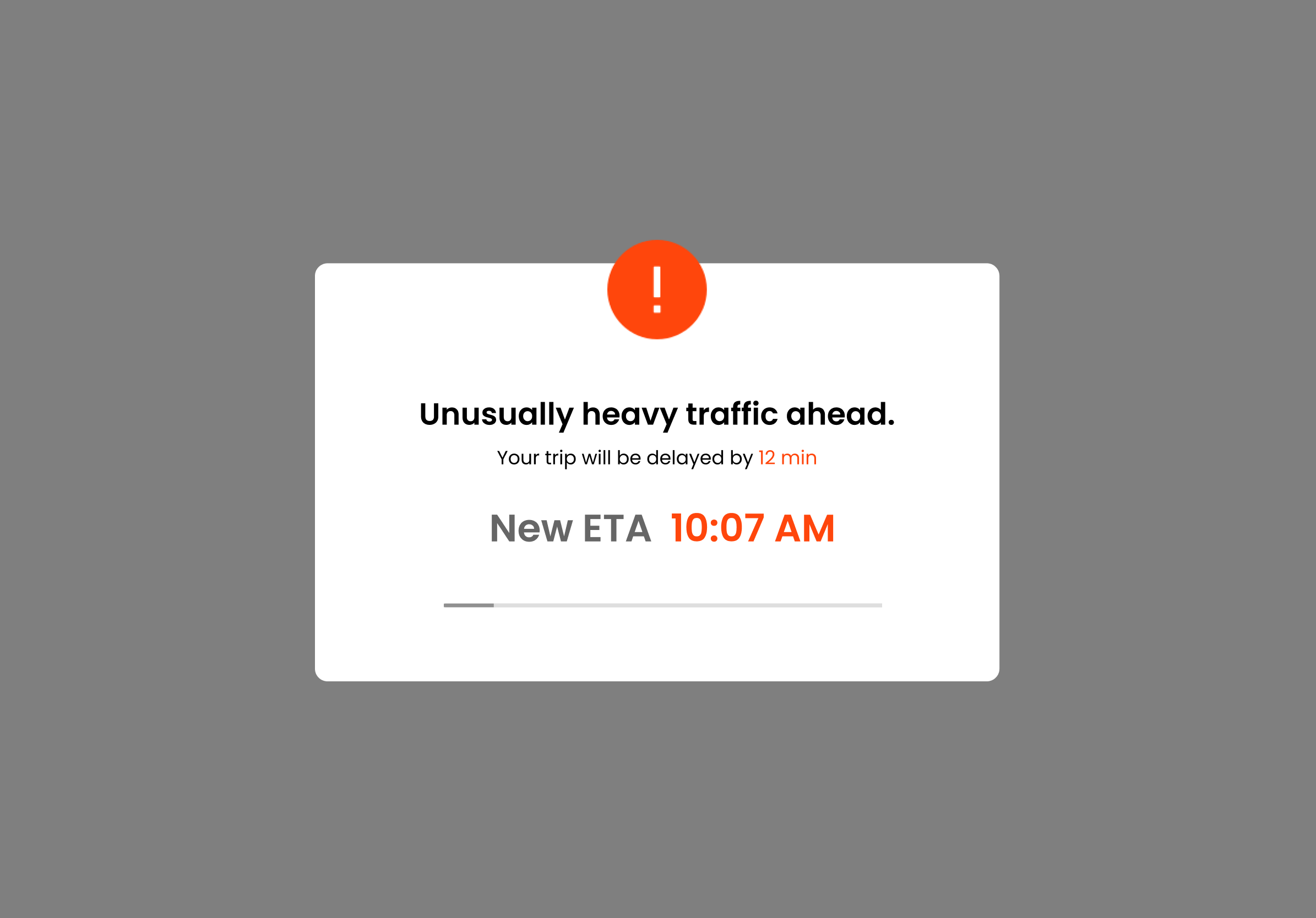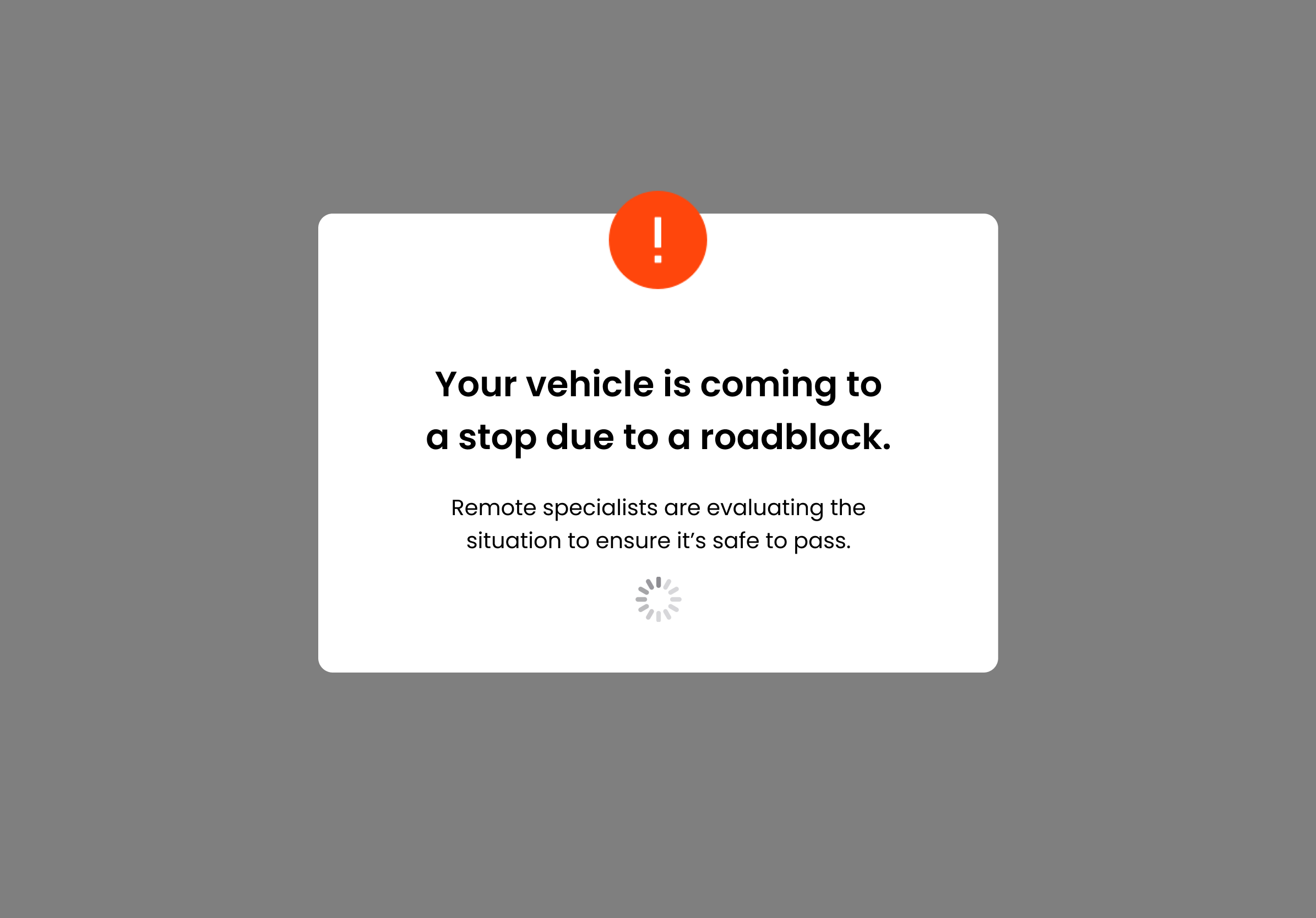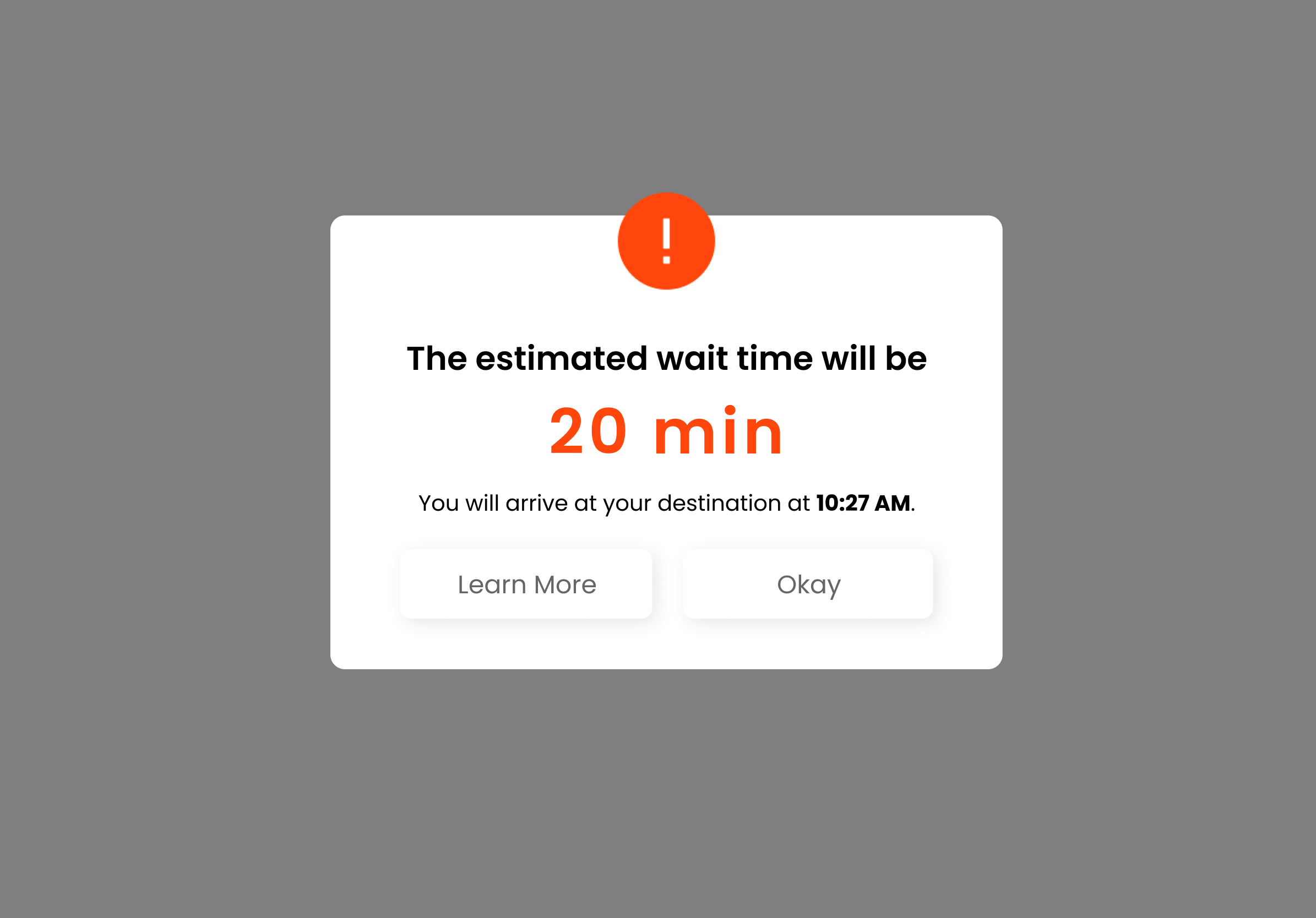Despite their varied experiences in transit, passengers across the familiarity spectrum share a desire for a discreet and non-intrusive way to access and receive relevant transit information. People movers should adapt the level of interaction with each passenger according to their familiarity with their destination and the vehicle itself, but keep discretion in mind across all passenger types.

“I like to be aware of my surroundings, I don't really like being too distracted when I'm on the bus.”
– User Interview Participant
Additionally on the topic of discretion, passengers are fearful of having their information displayed in public spaces but also want personalized feedback.
Depending on how public the mode of communication is, the level of personalization should adapt.
“I don't need everyone around me to know ahead of time that I'm getting off at this stop if that makes sense. You know, some things that I was able to be more privately done, I guess it would make me feel less anxious” - Participant | User Interview
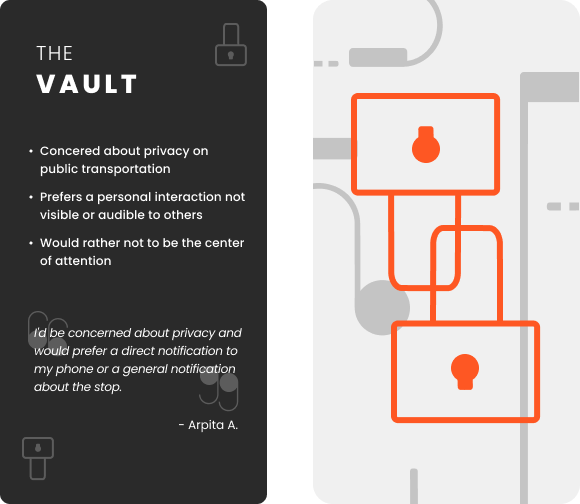
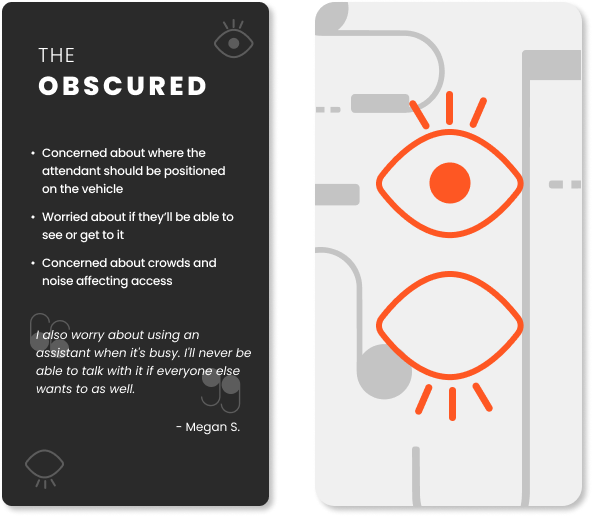
Systems and their notifications should be discreet. This allows less familiar passengers to be aware of their surroundings and appear confident when receiving and seeking out information.
Information for routine passengers should be similarly discreet, allowing them relax and “zone-out” but still be notified of any changes or stop information.
The opportunity we see here is for discretion to be prioritized regardless of how often a system engages with passengers.
Taking inspiration from the concept of “nudges”, we recommend that a design solution should support passenger privacy, relaxation, and allow users to project an air of confidence, even if they don’t feel it at the moment.
